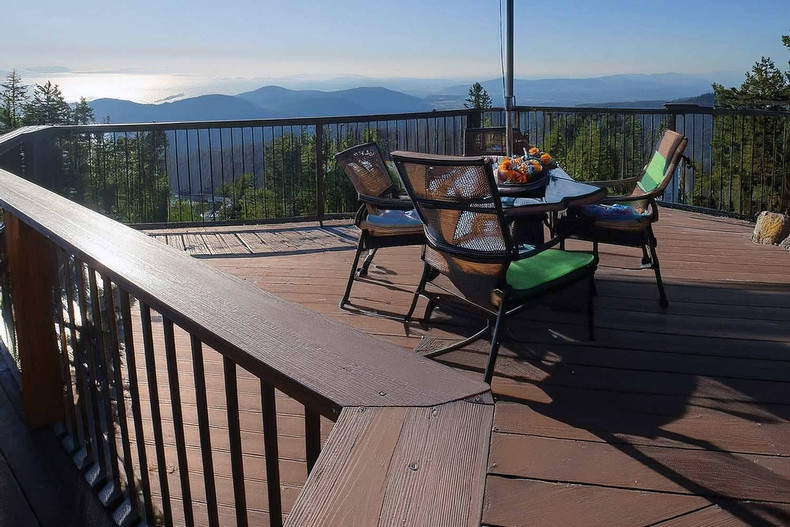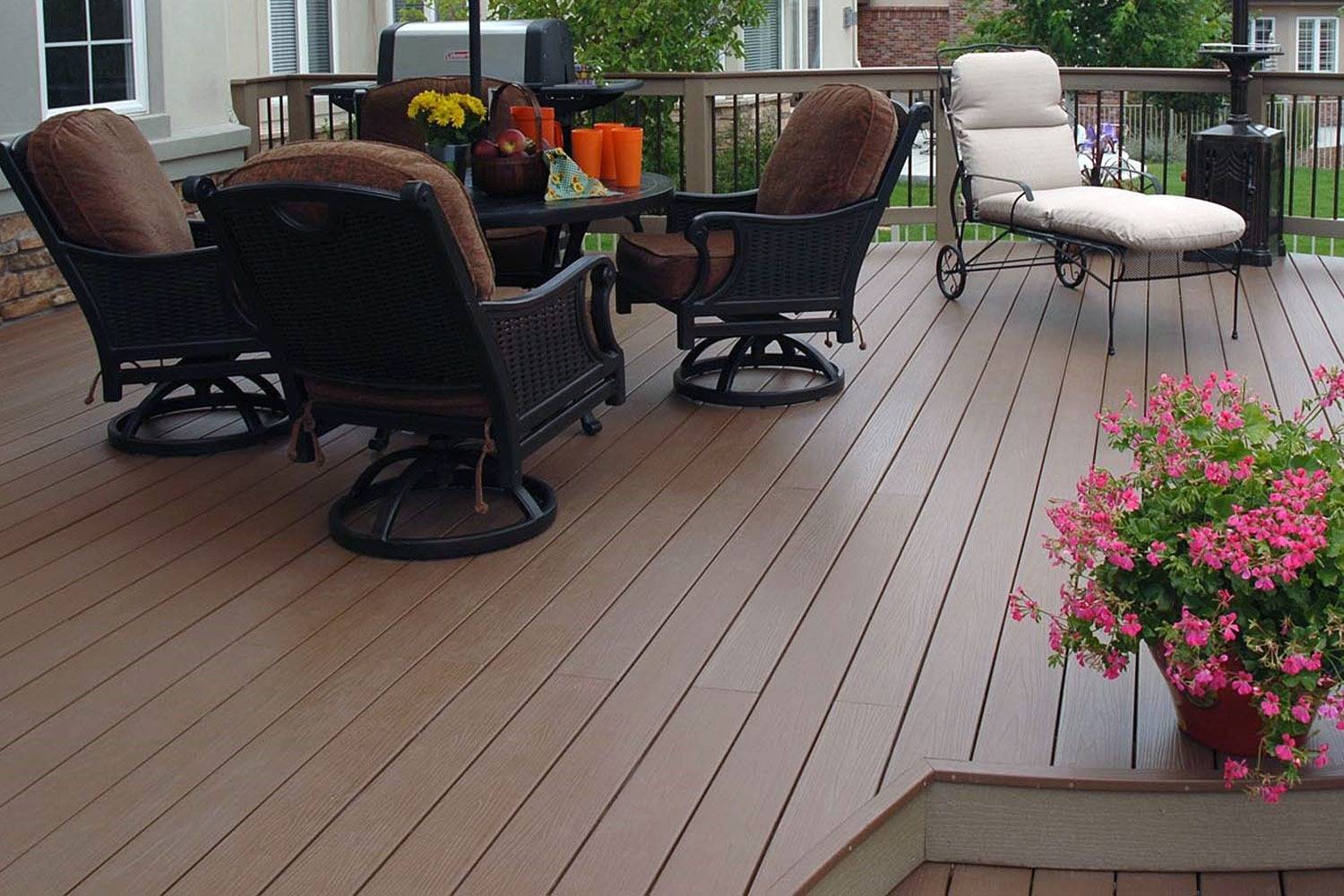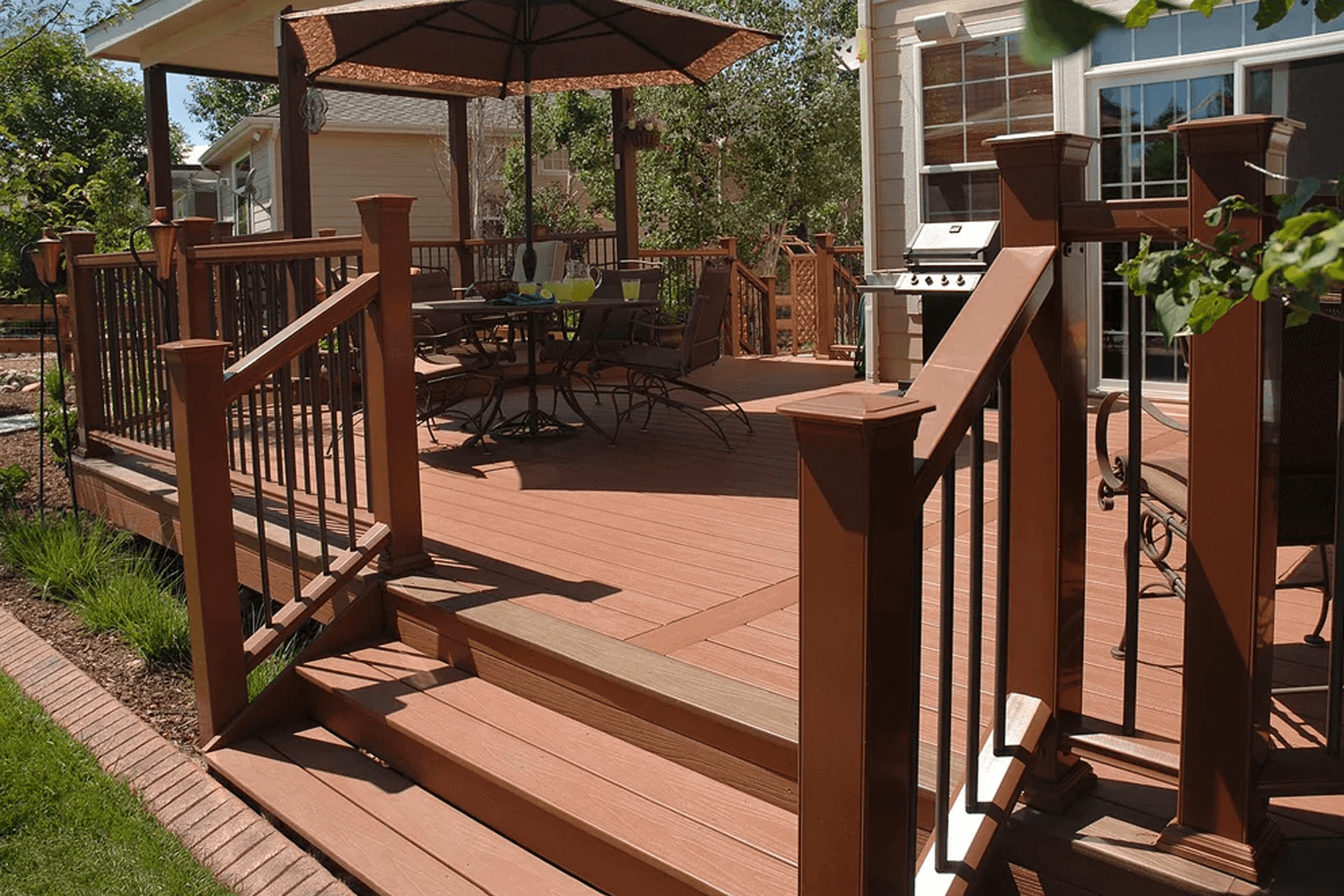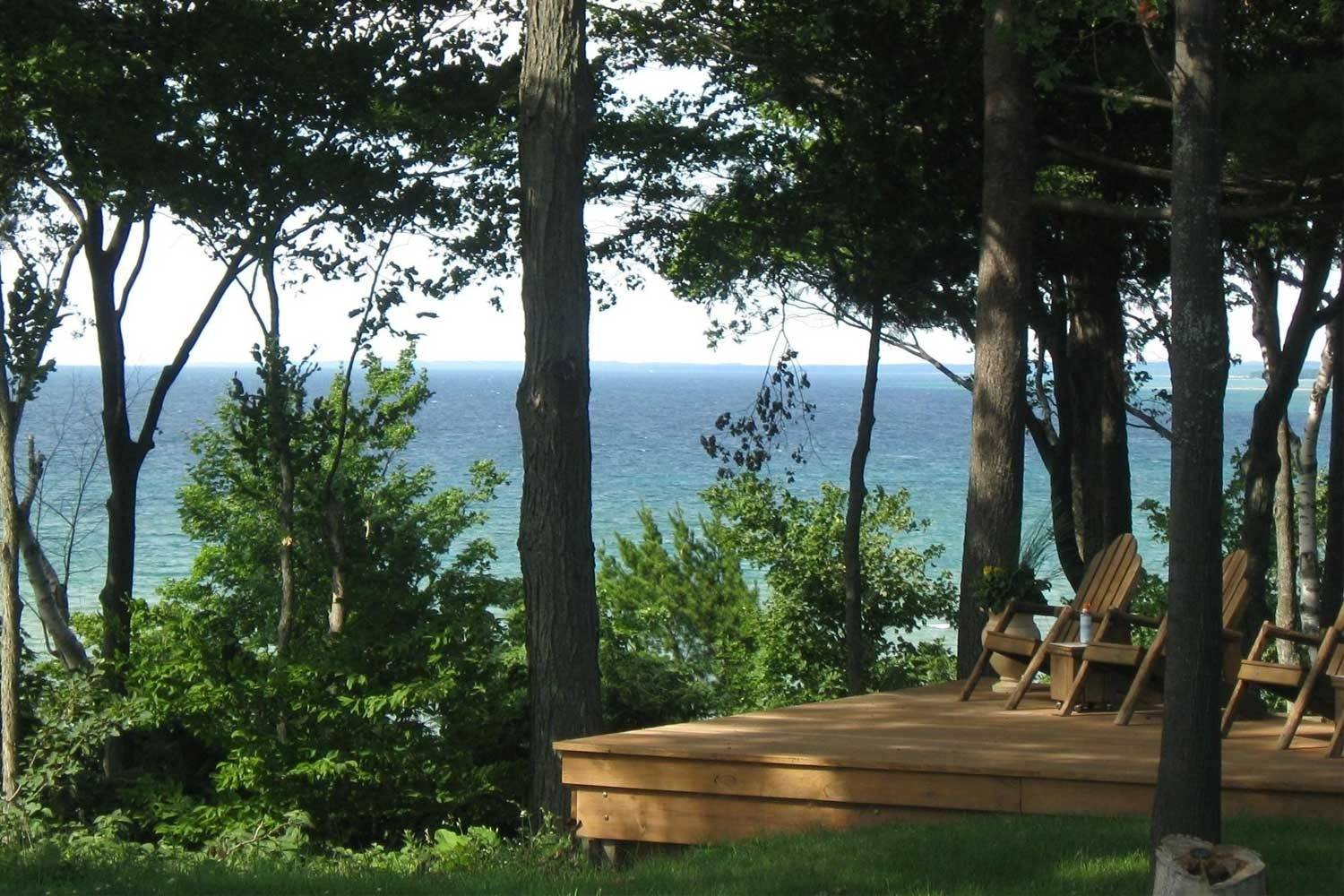If you choose composite material for your deck, it is important to remember your decking will be exposed to natural elements that can create a number of issues for any wood based material, most commonly mold and mildew. Mold can occur on any deck and choosing the right cleaning product can literally make or break your deck.
What Is Mold and Why Is It On My Deck?
Mold is a type of fungi that thrives in a moist environment and nourishes itself by feeding on dead or decaying organic material. Wood is among one of it’s favorite meals, because of it’s high cellulose content. Composite decking boards are made up of wood and plastic and if conditions are favorable, your deck could become a food source for mold. To make matters worse, mold can penetrate the surface and spread its “roots” into the deck. If this occurs, the clear plastic in the decking could be stained green or black. Once this happens, it can be nearly impossible to remove the internal mold stains.

Amazingly, many of the products recommended (even by the manufacturer) for mold are not only damaging to the deck, but will actually make the mold problem much worse in the long run. Most decking companies even have specific suggestions and bulletins dedicated to cleaning mold. Why? If not properly prevented, mold can be hard to clean and even harder to keep from coming back, especially when the wrong chemicals are used.
Will Bleach Kill the Mold?
By far, one of the worst products you can use (and is often recommended) on your composite deck is Chlorine Bleach. If you are reading a product label, Chlorine Bleach is referred to as Sodium Hypochlorite. The misconception exists that Chlorine Bleach will “kill it all”, but when it comes to mold, nothing could be further from the truth. Chlorine Bleach has been proven to kill bacteria and viruses on non-porous surfaces, but has not been proven effective in killing mold from porous surfaces, such as composite decking.
Why Would Anyone Recommend Using Chlorine Bleach on Composite Decking?
The American Heritage Dictionary defines Bleach as: 1.) To remove color from, as by means of chemical agents or sunlight. 2.) To make white or colorless.
When applied to a mold stained deck, Sodium Hypochlorite immediately begins to activate, “Bleaching” the surface mold white and any other stains on the surface. Within a matter of minutes your deck has probably never looked better. Bleach has done its job giving you, the deck owner, a “Quick Fix”, the instantaneous illusion of cleanliness. Mold problem solved? Unfortunately, not only is the mold still growing inside your deck, but the Chlorine in the Bleach has begun to damage it.
What Harm Will Bleach Cause?
Chlorine Bleach will cause irreparable damage and long-term problems for a composite deck. Using Bleach gives a false sense of remedy that is short lived. After summing up the costs for repair or replacement, it’s a large price to pay for a quick fix. Here are some not so fun facts about Chlorine Bleach:

Due to it’s ionic structure, Chlorine Bleach can only sit ON a surface. Mold remediation requires the need to clean and remove the mold BELOW and INTO a porous surface.
Bleach evaporates within a short period of time after use. However, its water content is left behind to seep into the pores of the composite material. Mold flourishes in this moist environment. The Chlorine never actually reaches the internal mold to remove it. This is why a few days later you will notice the regrowth of mold, sometimes even darker and more aggressive. The more times Bleach is used, the more difficult it will become to remove the mold stains and keep the composite deck clean.
Most manufacturers will warn you that Bleach will fade colored composites especially when used in direct sunlight. Regular use of Chlorine Bleach can eventually lead to premature chipping, splintering, and cracking that can affect the structural integrity of your composite deck. Even worse, Chlorine Bleach is extremely corrosive to any metals that may be used as fasteners that hold the decking together. Prolonged exposure to Bleach could lead to premature breakdown of the materials which may cause serious damage to the deck or eventual collapse.
Bleach is extremely toxic to inhale and exposure can cause respiratory problems, skin burns, extreme headaches, damage to the nervous system, vomiting and a host of other side effects.
What Do The Experts Say?
This is an excerpt from OSHA’s Mold Remediation/Clean-Up guidelines:
“As a general rule, simply killing mold, for example, with biocide is not enough. The mold must be removed, since chemicals and proteins, which can cause a reaction in humans, are present even in dead mold. The use of a biocide, such as chlorine bleach, is not recommended as a routine practice.”
Well intentioned composite decking manufacturers may not truly understand the best way to remove and prevent mold on the products they manufacture. Sure, using a Sodium Hypochlorite based cleaner will look good for a while, but the mold will always return, and most assuredly, with a vengeance.




